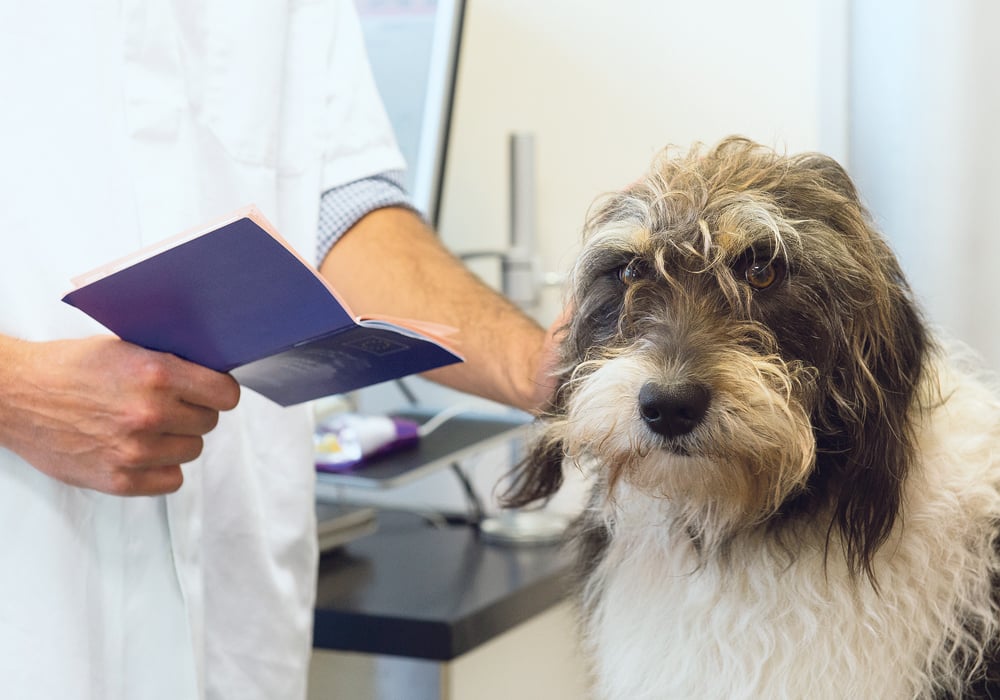Pet owners who want to head south this winter have a few options on how to deal with their four-legged loved ones.
They can board their cat or dog at a kennel, but that can be expensive. They can ask a neighbour to feed, water, walk and care for their pets, but that is a big ask. Or they could take their pets with them, by plane, or by car.
Those who choose to drive are advised to find accommodations well in advance of their departure dates, according to snowbirdadvisor.ca. And they should take lots of puppy pads for the kennel and newspapers to put on the floor under the litter box in hotel rooms.
Read Also

Farming Smarter receives financial boost from Alberta government for potato research
Farming Smarter near Lethbridge got a boost to its research equipment, thanks to the Alberta government’s increase in funding for research associations.
Animals should travel in carriers or kennels and owners should make sure they are on leashes before opening doors or windows. There’s something about riding in the car, especially along an unfamiliar route, that can make even mild-mannered household pets a little crazy. They will become disoriented. They will run away, usually not far, but always just out of reach. Hours can be spent rounding them up and getting them back in the car.
Travellers will probably be required to remove the cat from the carrier at the United States border. Make sure to bring gloves and be prepared to snap on a leash if necessary.
Ensure that pets are healthy and look healthy and well-groomed before you go. American border guards can turn them back if they seem at all sketchy. For dogs, rabies shots must be up to date with documentation to prove it. This isn’t officially required for cats but border guards may ask for it and cats must be rabies-protected before you bring them back into Canada anyway. It’s also a good idea to bring a certificate of veterinary inspection (CVI) from a vet verifying your pet’s general good health.
As well, individual states may have extra requirements. Arizona, for example, requires certificates of veterinary inspection for dogs and cats. This document must guarantee that any animal 12 weeks of age and older is currently vaccinated against rabies. It must be valid for 30 days and copies must have original signatures.
Like a passport, a pet’s rabies coverage should not expire during the trip. Check to make sure it will be current for the duration of the trip.
Dogs older than three months coming into Canada require proof of up-to-date rabies vaccinations. Dogs younger than three months just need proof of age. Dogs less than eight months old and travelling unaccompanied (as in airplane cargo) are required to be examined and have a health certificate issued by a licensed vet within 72 hours of arrival in Canada.
Cat owners must present a rabies vaccination certificate, issued by a licensed veterinarian, proving vaccination within three years of entry into Canada. The date and type of vaccination must be on the certificate. Kittens under three months are exempt.
Although vaccination requirements are the same, in some ways flying is easier. It’s quicker and most airlines seem to go out of their way to provide a safe travel experience for your fur babies. They may lose your luggage but never your pet.
Remember to start planning early. And remember, airlines may vary in requirements: what size animal will they allow? Are there any breeds they won’t fly?
“Travelling can be hard on everyone’s nerves,” says Morgan Bell of WestJet.
“Travelling with your pet adds a whole other layer to it, but it’s just so nice to know there are people whether in cargo or cabin that care about the animal…. It is something that people take really seriously.”
Air travellers can carry their pet with them in the cabin if the animal can fit comfortably into a kennel that can be stowed under the seat in front of them, or the pet can be transported as checked luggage or cargo.
WestJet customers travelling between Canada and the U.S. can expect to pay $50 to $59 if the pet travels in the cabin with them. For destinations outside of the U.S. it’s between $100 and $118, said Bell. If they’re travelling under the plane with checked luggage, or in cargo, it will be $118 to the U.S. and $200 to $236 for all other destinations outside the U.S. Other airlines are similar.
There may also be restrictions at times of extreme heat or cold, for animals travelling under the plane, which unlike the cabin is not temperature controlled.
Also, she added, for snub-nosed dogs, such as boxers, there are different requirements. These animals have reduced breathing capacity so flying can be harder for them. They must be checked by a vet and cleared to fly.
Pets must be in a kennel or carrier at all times. Airlines have strict rules about the type of carrier your pet can travel in, starting with the stipulation that it must be large enough for the occupant to lie down and there must be adequate padding for comfort. Check your airline’s website and talk to someone at the airline about specific requirements.

















